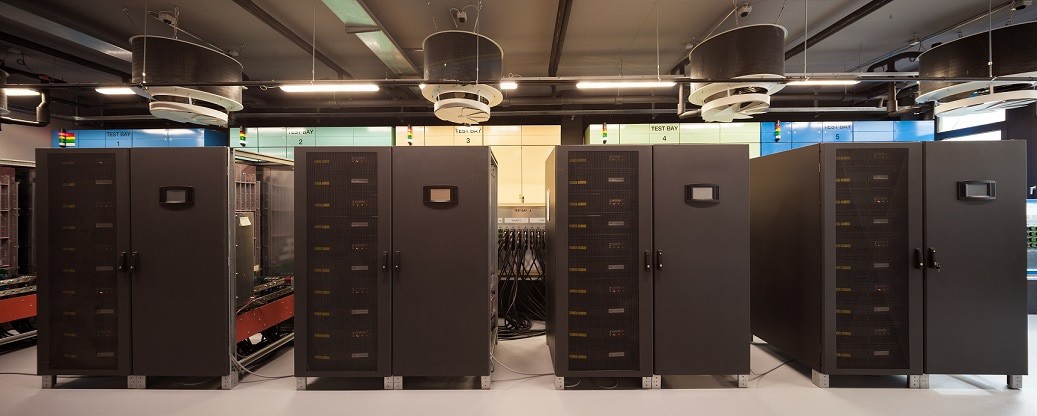What Is a UPS Battery? A Strategic Guide for Commercial and Industrial Decision Makers
Introduction: Why Understanding UPS Batteries Matters
In today’s always-on business environment, power continuity is non-negotiable. Whether you manage a data center, manufacturing line, telecom hub, or medical facility, even a few seconds of power loss can result in data corruption, equipment damage, or safety risks. That’s where UPS batteries step in—delivering crucial backup energy when the grid fails.
But what is a UPS battery, really? How does it work, and more importantly, how do you choose the right one for your enterprise application?
This guide answers these questions and more—built specifically for commercial and industrial procurement professionals looking to make informed, future-ready decisions.
What Is a UPS Battery?
A UPS (Uninterruptible Power Supply) battery is the core energy storage component of a UPS system. Its role is to provide short-term power when utility supply is interrupted, giving your systems time to shut down safely or continue running until a generator kicks in.
Unlike standby generators, UPS batteries respond instantly—typically within 2–10 milliseconds—ensuring seamless transition and preventing data loss or equipment failure.
How UPS Batteries Work in a System
A typical UPS system consists of:
- Input from the utility grid
- Inverter/rectifier to manage AC/DC conversion
- Battery pack (usually DC-based)
- Load (your critical systems)
During normal operations, the battery remains charged by the incoming power. When a disruption occurs, the battery discharges to power the inverter, which keeps your connected equipment running without delay.
Common Types of UPS Batteries
Choosing the right UPS battery depends on multiple factors including runtime, load size, temperature, and maintenance requirements. Below are the most common types:
- Valve-Regulated Lead Acid (VRLA)
- Most common in legacy UPS systems
- Affordable upfront cost
- Shorter cycle life (typically 3–5 years)
- Temperature-sensitive and require ventilation
- Flooded Lead Acid
- Used in large-scale industrial UPS systems
- Long service life, but require regular maintenance and spill management
- Not suitable for confined or temperature-volatile environments
- Lithium-Ion Batteries
- High energy density, compact form factor
- Long cycle life (up to 10+ years or 3000+ cycles)
- Wider operating temperature range
- Lower total cost of ownership despite higher initial investment
- Best suited for environments with frequent outages or tight space constraints
Key Considerations for UPS Battery Selection
As a procurement or facilities manager, evaluating the following dimensions will help you align battery specs with business needs:
| Criteria | Considerations |
| Backup Duration | How many minutes of backup do your systems require? |
| Load Profile | What equipment is connected to the UPS, and what are their start-up surges? |
| Environment | Temperature extremes, humidity, and airflow impact battery choice |
| Maintenance Resources | Lead-acid needs routine checks; lithium requires minimal upkeep |
| Lifecycle Cost | Lithium often pays off in the long term through reduced replacement and labor |
| Footprint | Space limitations may favor lithium’s compactness |
UPS Battery Applications Across Industries
UPS batteries are not one-size-fits-all. Here’s how various sectors deploy them:
- Data Centers: Low-latency lithium systems prevent packet loss and equipment reboots
- Manufacturing Plants: Protect PLCs, conveyors, and robotic lines from downtime
- Telecom Networks: Ensure uninterrupted signal transmission
- Hospitals & Labs: Maintain power for diagnostic and life-support systems
- Commercial Buildings: Keep elevators, lighting, and fire safety systems online
To explore UPS battery options tailored to enterprise environments, visit our product overview page:
👉 Batteries For UPS
Why More Enterprises Are Switching to Lithium UPS Batteries
Traditionally, VRLA batteries have dominated the UPS market, but their performance limitations and maintenance burdens are causing many businesses to rethink.
Lithium-ion UPS batteries offer:
- Faster recharge times, supporting frequent outage environments
- Up to 60% smaller footprint and 70% lighter weight
- Minimal maintenance (no watering or ventilation systems required)
- Longer service life, reducing replacement cycles
For commercial setups with high uptime expectations or space constraints, lithium is quickly becoming the preferred standard.
Explore one of our most efficient models optimized for short-time backup:
👉 PU Series – Short-Time Backup Power Lithium UPS
UPS Battery Maintenance and Replacement: What You Need to Know
Even the best UPS systems lose effectiveness if the battery is neglected. Here are best practices to maximize performance:
- Routine Testing: Periodic discharge tests to assess health
- Temperature Control: Most batteries operate best at 20–25°C
- Replacement Scheduling: Use monitoring systems to predict end-of-life
- Battery Management System (BMS): Critical in lithium packs for balancing, protection, and real-time alerts
Conclusion: Make Power Resilience a Strategic Advantage
Understanding what a UPS battery is goes beyond basic definition—it’s about recognizing how this component safeguards operational continuity. As industries digitize and regulatory uptime expectations increase, selecting the right UPS battery becomes a strategic investment.
Whether you’re upgrading an aging VRLA system or planning a new facility, lithium-based options can future-proof your infrastructure while reducing lifecycle costs.
Ready to explore lithium UPS battery solutions?
👉 Visit our full product suite for Batteries For UPS
👉 Or dive into the PU Series Lithium UPS Battery for Short-Time Backup


